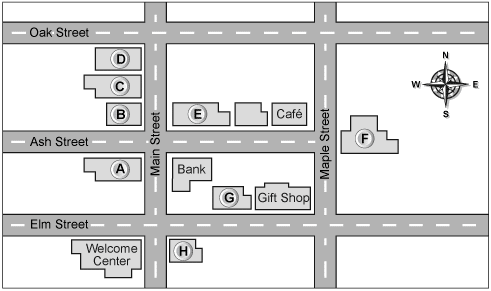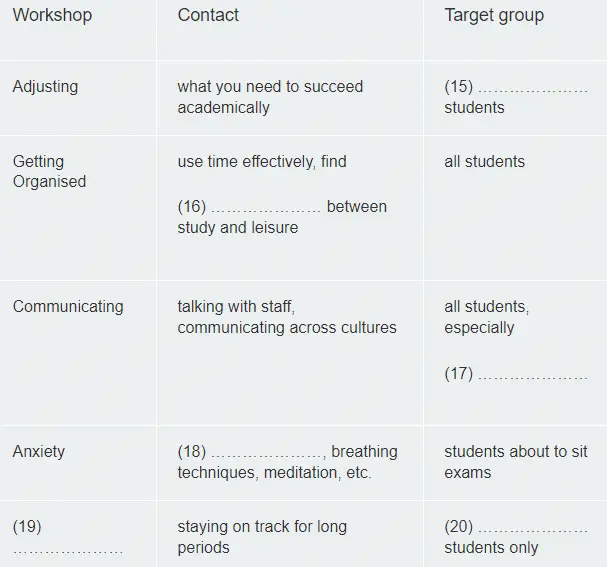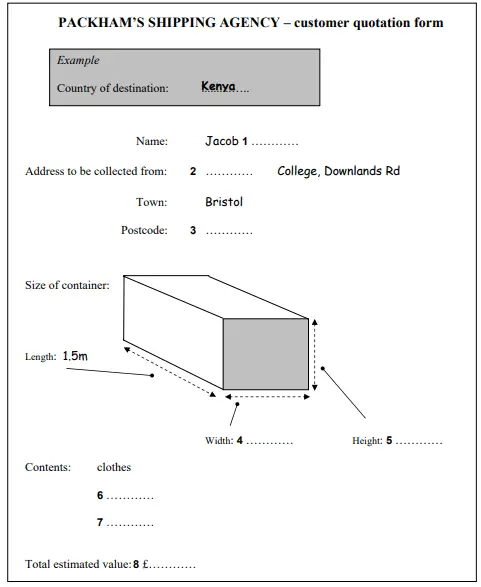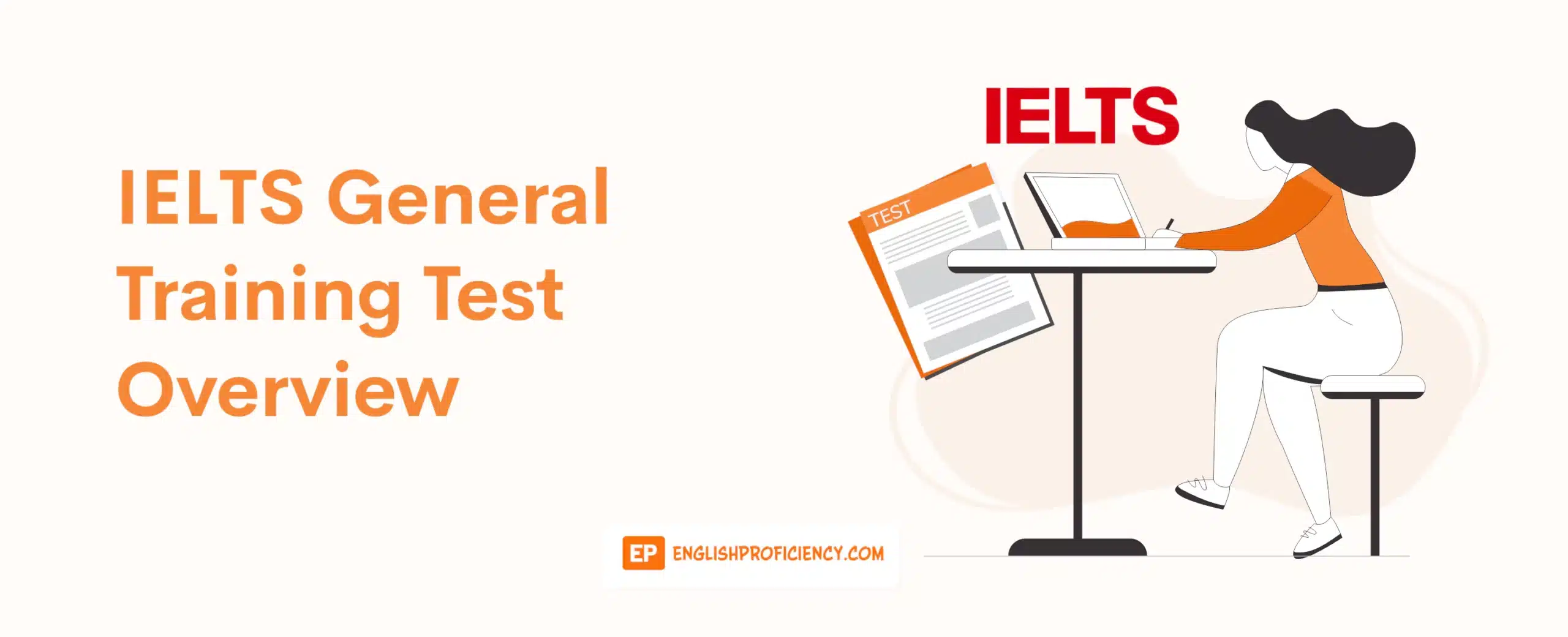The International English Language Testing System (IELTS) is a set of tests designed to assist you if you choose to work, study, or move to a country where English is the primary language. This includes Australia, Canada, New Zealand, the United Kingdom, and the United States. It has four sections: Speaking, Reading, Listening, Writing.
International teams of professionals develop the IELTS test. It undergoes massive research to ensure the test is fair and impartial for all candidates regardless of nationality, background, gender, lifestyle, or location.
The IELTS Test has two modules: Academic and General Training. Both modules appraise your speaking, listening, reading, and writing proficiency, but the difficulty level is different.
The IELTS General Training Test is intended to assess if you can communicate effectively in English in ordinary situations, both in the working and social environment. Suppose you plan to work or study at a lower degree level or migrate to a country that speaks English like Australia, Canada, New Zealand, the United Kingdom, and the United States. In that case, the IELTS General Training Test is what you should take.
Moreover, if you plan to pursue higher studies or seek professional registration in the countries mentioned earlier, you should take the Academic Training Test. It assesses your readiness to begin studying English or work in an academic setting.
The Academic and General Training modules of IELTS have the same Speaking and Listening Tests but different Reading and Writing Tests. This article will help you with everything there is to know about the IELTS General Training Test.
IELTS General Training Test Format
The IELTS General Training Test is divided into four sections:
Generally, it is less difficult than the IELTS Academic Test, and as a result, the band scores are different. You need to answer more questions correctly on a General Training test to receive the same grade as an Academic Reading test.
Below are the test formats and types of questions that you will encounter in the different sections of the IELTS General Training Test:
1. IELTS Speaking Section
The IELTS General Training Test is divided into three parts and is conducted in the form of a casual conversation between the examiner and you. Usually, it is scheduled on a different day than the other three tests: Listening, Reading, and Writing.
a) Part 1 or Task 1
The IELTS Speaking Test Part 1 is called ‘The Interview’ and takes about 3 to4 minutes. You need to verify your identity before proceeding to the actual interview. The examiner will ask you for general information about your work, studies, family, hometown, and interests.
The IELTS Speaking Test Part 1 assesses your ability to deliver your ideas and beliefs on various topics by responding to a series of questions.
Example:
Why did you take up your course?
What about your job is interesting?
How does your family spend the New Year?
What is there for a tourist to visit in your hometown?
What do you like doing on weekends?
b) Part 2 or Task 2
The IELTS Speaking Test Part 2 is called ‘Long Turn’ and lasts for 4 to 5 minutes. You will be handed a cue card, or a task card, where a topic is written, along with the other points that you should cover in your speech. The most common topics in this part of the test include people and places you are familiar with, things you own, your favorites, holidays, and past occurrences.
You have one minute to prepare and two minutes to talk about the given topic. The examiner controls the time, and you will be notified if your two minutes have elapsed. It is called ‘Long Turn’ because you need to talk for the entire two minutes.
The IELTS Speaking Part 2 appraises your ability to speak for an extended period about a specific topic while using proper language and organizing your thoughts logically.
Example:
Topic/Question:
Describe someone you know who is patient
How to Answer the Question:
- who it is
- how you know them
- what this person does
and explain what you think other people think of them and why.
Topic/Question:
Describe something you own that has been with you for a long time
How to Answer the Question:
- what this is
- how you got it
- how long you have had it
- and explain how you would feel if you would lose it.
c) Part 3 or Task 3
The IELTS Speaking Test Part 3 is called ‘Two-Way Discussion’ and takes about 4 to 5 minutes. The topics in this part of the test are related to the topics discussed in Parts 1 and 2. However, the questions are more challenging because they require your critical thinking skills and English-speaking skills working hand in hand.
Generally, the questions in this part of the test involve expressing your opinions and judgments, assessing and evaluating specific issues, justifying cause and effect relationships, analyzing the similarities and differences of particular ideas, and speculating and expressing probabilities.
The IELTS Speaking Part 3 evaluates how well you can express ideas logically and abstractly while maintaining fluency and coherence.
Examples:
Topic:
Clothes
Sample Questions for the Topic:
- What kinds of clothes do you like to wear?
- Do the clothes we wear define us?
- Do people behave differently depending on the clothes they are wearing?
- Should we judge people by the kind of clothes they wear?
- What is the difference in the clothes that old and young people wear?
Topic:
Decision-making
Sample Questions for the Topic:
- Do you like making decisions?
- Have you made a bad decision?
- Why do you think people find it hard to make decisions?
- What should people consider when making decisions?
- Do you think good decision-making can be taught?
2. IELTS Listening
The IELTS Listening Test lasts about 30 minutes, and there are four parts with ten questions to answer in each part. The materials will be in the form of audio recordings that will only be played once.
- Part 1 – conversation between two people in a social context
- Part 2 – a speech or talk with just one person in a social context
- Part 3 – conversation between up to four people in an educational and training context
- Part 4 – a speech or talk with just one person on an academic subject
Below are the different question types that might appear in the IELTS Listening Test.
a) Multiple Choice
You’ll be presented a stem which can either be an incomplete sentence or a question. There are three to four options to choose from where only one is correct. The other options might seem correct but are, in fact, wrong and are just distractors.
Example:
Select the correct letter, A, B, or C.
1. Why did Judy decide to study in East London?
A. She wanted to learn more about herself.
B. She was fascinated by the names of places.
C. She had read several books on the subject.
2. What problem did Judy encounter in her dissertation?
A. composing the initial draft
B. organizing the information she had gathered
C. locating sufficient relevant sources
b) Matching
You’ll be presented with a list of things from the audio recording, and you need to match them to a set of options.
Example:
Who is responsible for each area?
A. Mary Brown
B. John Stevens
C. Allison Jones
D. Tim Smith
1. Finance — ________
2. Food — ________
3. Health — ________
c) Plan, Map, Diagram Labelling
You’ll be presented with a plan, map, or diagram, and you need to label them. You might be given options, or you will have to select the answer from the audio recording itself.
Example 1:
Choose 5 answers from the box. Write the correct answers A-I next to questions 1-5.

| A. | Art collection |
| B. | Children’s books |
| C. | Computers |
| D. | Local history collection |
| E. | Meeting room |
| F. | Multimedia |
| G. | Periodicals |
| H. | Reference books |
| I. | Tourist information |
Example 2:
The map has 8 labels. Choose the correct labels for each building.

| A | B | C | D | E | F | G | H | |
| Quilt Shop | ||||||||
| Handicraft Museum | ||||||||
| School Shop |
d) Form, Note, Table, Flow Chart, Summary Completion
You’ll be presented with either an incomplete form, note, table, flow chart, or a summary based on the audio recording or parts of it. You need to complete them using the information from the audio recording.
Example 1:
Complete the table below.
Your answer for each should be no more than three words/numbers.

Example 2:
Complete the form below.
Your answer for each should be no more than three words/numbers.

e) Sentence Completion
You’ll be given incomplete statements. You need to complete them using the details from the audio recording. Generally, you have to complete the statements in not more than three words, but double-check to make sure.
Example:
Complete the sentences below.
Your answer for each should be no more than three words/numbers.
- Paxton is the best place for seeing rare ___________ all year round.
- It is a good time for seeing unusual ___________.
- A portion of the ___________ has been turned into a swimming pool.
f) Short Answer Questions
You’ll be presented with questions that you need to respond to. This type of question, like the sentence completion task, usually requires answers in no more than three words, but double-check the instructions to be sure.
Example 1:
Answer the questions below.
Your answer for each should be no more than three words/numbers.
- How much money did the charity receive when it won an award?
- What is the charity currently hoping to buy?
- Who will fund the next project of the charity?
Example 2:
Answer the questions below.
Write no more than three words/numbers for each answer.
1. What two factors can make social contact in a foreign country challenging?
____________
_____________
2. What types of community groups does the speaker give examples of?
____________
____________
3. IELTS General Training Reading Section
The IELTS General Training Reading Test lasts 60 minutes and is divided into three parts. There are five to six texts that range from 500 to– 900 words in length. There are 40 questions to answer. The Reading Test texts are excerpts from notices, advertisements, company handbooks, and newspapers.
The IELTS General Training Reading Test assesses various reading abilities such as reading for major ideas, reading for detail, skimming, understanding logical argument, and recognizing writers’ viewpoints, attitudes, and intent.
- Part 1 – two to three short factual texts
- Part 2 – two short work-related factual texts
- Part 3 – one long text about a general topic
Below are the different types of questions that might appear in the IELTS General Training Reading Test.
a) Multiple Choice
You’ll be presented with a ‘stem,’ which could either be a statement that is incomplete or a question. Three or four possible answers follow the stem, but only one will be correct (the answer). The other three will appear correct but will be wrong in some way (the distractors).
Example:
Select the correct letter, A, B, C, or D.
1. The growth in global greenhouse gas emissions has been attributed to
A. Power generation and coal mining
B. Trends in population and lifestyle
C. Pollution from industry in emerging countries
D. Reduced rainfall in different parts of the world
b) Identifying Writer’s View
You’ll be presented with a series of statements. You need to evaluate whether these statements agree with the writer’s viewpoints and identify the writer’s perspective not just from what is directly stated but also from what is implied.
Example:
Does the information in the reading text agree with the following statements?
YES if it agrees with the writer’s point of view
NO if it contradicts the writer’s point of view
NOT GIVEN if it doesn’t say what the writer thinks about it
1. There is no practical component to bookkeeping.
2. Only advanced students should attempt bookkeeping.
3. Business tenets are a great place to start for newcomers.
c) Matching Information
You’ll be presented a series of statements, and you need to identify the paragraphs where these statements are from.
Example:
The text has six paragraphs labeled A-F.
Which paragraphs contain the following information?
1. A comparison of previous and modern modes of transportation ________
2. How do bad driving habits contribute to traffic congestion? ________
3. The relative advantages of automobiles and public transportation ________
d) Matching Headings
You’ll be presented with a list of headings. You need to pick the most appropriate heading for each paragraph.
Example:
Which heading best sums up the main idea of paragraphs B, C, and D.
Write the appropriate numbers I – VI on your answer sheet.
I. A lack of investment in driver education
II. Questions and disagreements among experts
III. Driver behavior has an impact on traffic speed.
IV. Different countries have dealt with traffic congestion in different ways.
V. How a mathematical experiment helped to alleviate traffic congestion
VI. What happened when a notion from one field of study was used in another?
1. Paragraph B _________
2. Paragraph C _________
3. Paragraph D _________
e) Matching Features
You’ll be presented with a list of options with the relevant set of statements. You need to match the options given to the names or features which were mentioned in the text.
Example:
Match each item with the group that first invented them.
Write the correct letter A, B, C, D, or E.
You may use any option more than once.
A. Chinese
B. Indians
C. British
D. Arabs
E. Americans
1. black powder __________
2. rocket launcher __________
3. rocket as war weapons __________
f) Matching Sentence Endings
You’ll be presented with a list of incomplete sentences and possible sentence endings. You need to match them together based on the information in the reading text.
Example:
Why Soil Degradation is Bad for Humans
Complete each sentence with the correct ending. Write the correct letter A-F.
18. Nutrients in the unused parts of plants ________
19. Inorganic fertilizers produced with the Haber-Bosch process ________
20. The idea of zero net soil degradation ________
A. maybe more effective to use at a global level
B. may improve the number and quality of plants going there
C. may help governments to be aware of soil-related issues
D. may cause damage to different aspects of the environment
g) Sentence Completion
You’ll be presented with incomplete sentences that you need to complete. You will use the information from the reading text.
Example:
Fill in the gaps to complete the sentences below using words taken from the reading text.
Your answer for each should be no more than three words/numbers.
1. In an emergency, a teacher will call the administration or ___________.
2. Normally, there will be multiple ___________ signals for evacuation.
3. Students should leave the building by the ___________ if at all feasible.
h) Note, Table, Flow Chart, Summary Completion
You’ll be presented with either an incomplete form, note, table, flow chart, or a summary based on the reading text or parts of it. You need to complete them using the information from the reading text.
Example:
Complete the flowchart below.
Your answer for each should be no more than three words/numbers.

i) Diagram Label Completion
You’ll be presented with a diagram, and you need to label it. You might be given options, or you will have to select the answer from the reading passage itself.
Example:
Label the diagram below.
Your answer for each should be no more than three words/numbers.

j) Short Answer Questions
You’ll be presented with a series of questions to answer. In general, your answers should be three words or less, but check the instructions to be sure.
Example:
Answer the questions below using words taken from the reading text.
Your answer for each should be no more than three words/numbers.
1. What was discovered in several Fancy Foods items?
2. On the jars, where can you locate the batch number?
3. How much will you get for a tainted Chicken Curry jar that has been opened?
4. IELTS General Training Writing Section
The IELTS General Training Writing Test lasts 60 minutes and has two tasks to be completed. The second task has more weight so you should spend more time on it. It evaluates your ability to offer a coherent, relevant, well-organized argument, support concepts with evidence or examples, and use language correctly.
a) Task 1
The first task in the IELTS General Writing Test requires you to respond to a situation by writing a letter requesting information or asking for an explanation. You need to have at least 150 words in your letter.
Example 1:
Situation:
You left your purse in a restaurant.
Corresponding Task:
Write a letter to the supervisor of the restaurant. In your letter,
- describe the item
- explain where and when you left it
- say what action you want the restaurant to take.
Example 2:
Situation:
You have decided to quit your job to look for a new one.
Corresponding Task:
Write a letter to your friend asking for some advice. In your letter,
- explain why you quit your job
- describe the kind of job your wish to have
- seek advice or help
b) Task 2
On the other hand, the second task requires you to write an essay in response to the point of view, argument, or problem. You need to have at least 250 words in your letter.
Example 1:
Argument or Problem:
Some individuals believe home-schooling is the best way to help children develop, while others believe that children should attend school.
Write an Essay:
Discuss and give your opinion on both views. Cite reasons for your answer and include any relevant examples from your knowledge or experience.
Example 2:
Argument or Problem:
Some people believe that setting a retirement age for everyone, no matter the occupation, is unjust. They believe that some workers should be able to retire and be given a pension at a younger age.
Write an Essay:
Do you agree or disagree? What kinds of workers do you think you should gain from early retirement?
Cite reasons for your answer and include any relevant examples from your knowledge or experience.
Additional FAQs on IELTS General Training
What is the Difference Between IELTS Academic and IELTS General Training?
The difference between the IELTS Academic and the IELTS General Training is the people it is designed for.
The IELTS Academic Test is devised for those who plan to pursue higher studies and seek professional registration.
On the other hand, the IELTS General Training is designed for studying or training below degree level.
While the IELTS Academic Test evaluates your readiness to work in the academic and professional setting, the IELTS General Training test assesses your readiness in the social setting.
Is IELTS General Easy?
In general, the IELTS General Training Test is less difficult than the IELTS Academic Test.
However, it does not mean that it is easy. It is a standardized test designed to put your English abilities to the test, and it needs a lot of preparation and hard work to get your desired band score.
What is IELTS General Training Test For?
The IELTS General Training Test is for those who want to study or train below degree level in English-Speaking countries like Australia, Canada, New Zealand, the United Kingdom, and the United States.
If you wish to apply for secondary education, enroll in vocational training, or migrate to the mentioned countries, you should take the IELTS General Training Test instead of the IELTS Academic Test.
What is a Good Score for IELTS General?
Overall, a good score in the IELTS General Test is 7 or higher.
A band score of 7 means that you are a ‘good user.’ In some countries, the minimum required band score is 7.
If you obtain a band score of 8, it means that you are an ‘excellent user.’ Additionally, a 9-band score means that you are an ‘expert user.’

